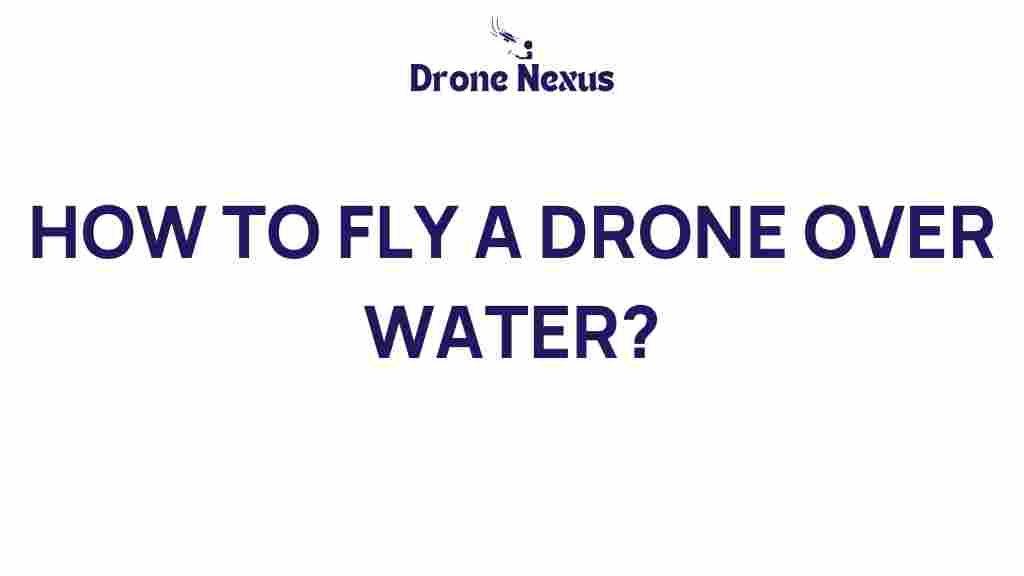Drone Flight: Soaring Over Water Like a Pro
In recent years, drone flight has captivated enthusiasts and professionals alike, offering breathtaking views and unique perspectives. Whether you’re a photographer seeking stunning aerial shots or an adventurer looking to explore serene water bodies, mastering drone flight is essential for a successful experience. This comprehensive guide will help you navigate the intricacies of flying over water, ensuring safety, control, and stunning visuals.
Understanding Your Drone
Before taking to the skies, it’s crucial to understand the fundamentals of your drone. Each model has its specifications, controls, and capabilities. Here are some key aspects to consider:
- Weight: Lighter drones are generally easier to maneuver but may have less stability in windy conditions.
- Battery Life: Knowing how long your drone can fly is essential to avoid unexpected landings, especially over water.
- Camera Quality: If your goal is aerial photography, consider a drone with a high-quality camera.
- Range: Understanding the maximum distance your drone can fly from the remote control will help you plan better.
Preparation for Drone Flight Over Water
Once you’re familiar with your drone, the next step is preparation. Here’s a step-by-step approach to ensure a successful flight:
- Check Local Regulations: Before flying, review the regulations concerning drone flight in your area, especially over water bodies.
- Scout the Location: Visit the site beforehand to understand the environment, potential obstacles, and wind conditions.
- Weather Conditions: Always check the weather forecast. Ideal conditions include low wind and clear skies.
- Battery Check: Ensure your drone’s battery is fully charged and bring extra batteries if possible.
- Waterproofing: If your drone isn’t waterproof, consider using a waterproof case to protect it from splashes.
Executing the Flight
Now that you are prepared, it’s time to take to the skies. Follow these steps for a seamless drone flight experience over water:
1. Pre-Flight Checks
Before launching, conduct a thorough pre-flight check:
- Ensure all propellers are secure.
- Verify that the GPS signal is strong.
- Check the camera settings if you plan to take photos or videos.
2. Takeoff
Choose a stable and clear area for takeoff. Gradually increase the throttle to lift off smoothly. Maintain a steady altitude and avoid sudden movements.
3. Navigating Over Water
When flying over water, keep the following tips in mind:
- Maintain Line of Sight: Always keep your drone within your visual line of sight to avoid losing control.
- Altitude Awareness: Stay at a safe altitude to avoid obstacles and ensure a safe return in case of emergencies.
- Wind Awareness: Be mindful of the wind direction and intensity, as it can affect your drone’s stability.
4. Capturing Stunning Aerial Footage
To make the most of your drone flight, experiment with different angles and settings:
- Use the drone’s gimbal to stabilize the camera for smooth footage.
- Try different heights to capture unique perspectives.
- Utilize the rule of thirds in your composition for more visually appealing shots.
Troubleshooting Common Issues
Even the most experienced drone pilots encounter challenges. Here are some common problems and their solutions during drone flight:
- Drone Won’t Take Off: Check the battery level and ensure the drone is calibrated properly.
- Signal Loss: If you lose signal, try to regain control by slowly moving towards the drone’s last known position.
- Camera Issues: If the camera isn’t functioning correctly, check the settings and ensure the lens is clean.
Post-Flight Procedures
After a successful flight, follow these steps to ensure your drone is in good condition:
- Inspect the drone for any damage.
- Review your footage and photos, and back them up immediately.
- Charge the batteries and clean the drone to maintain optimal performance.
Safety Tips for Drone Flight Over Water
Safety should always be your top priority when conducting drone flight, especially over water. Here are some essential tips:
- Fly with a Friend: Having someone with you can help monitor the drone and assist in case of emergencies.
- Stay Away from Crowds: To avoid accidents, keep your drone away from people and wildlife.
- Emergency Procedures: Familiarize yourself with the emergency landing procedure in case you lose control.
Enhancing Your Drone Flight Skills
Improving your drone flight skills takes practice. Here are some strategies to help you become a proficient pilot:
- Practice Regularly: Frequent flying will help you become more comfortable with your drone.
- Join a Community: Engage with other drone enthusiasts through forums or local clubs. Sharing experiences can be invaluable.
- Online Tutorials: Consider watching online tutorials and guides to learn advanced techniques. Websites like YouTube offer a wealth of information.
Conclusion
Mastering the art of drone flight over water requires knowledge, practice, and a commitment to safety. By understanding your drone, preparing adequately, and following best practices, you can capture stunning visuals and enjoy the thrill of soaring above tranquil waters. Remember, the more you fly, the better you will become. So gear up, take to the skies, and let your creativity flow!
For more tips on enhancing your drone flight experience, check out our other articles on drone photography and advanced flying techniques here.
This article is in the category Applications and created by DroneNexus Team
